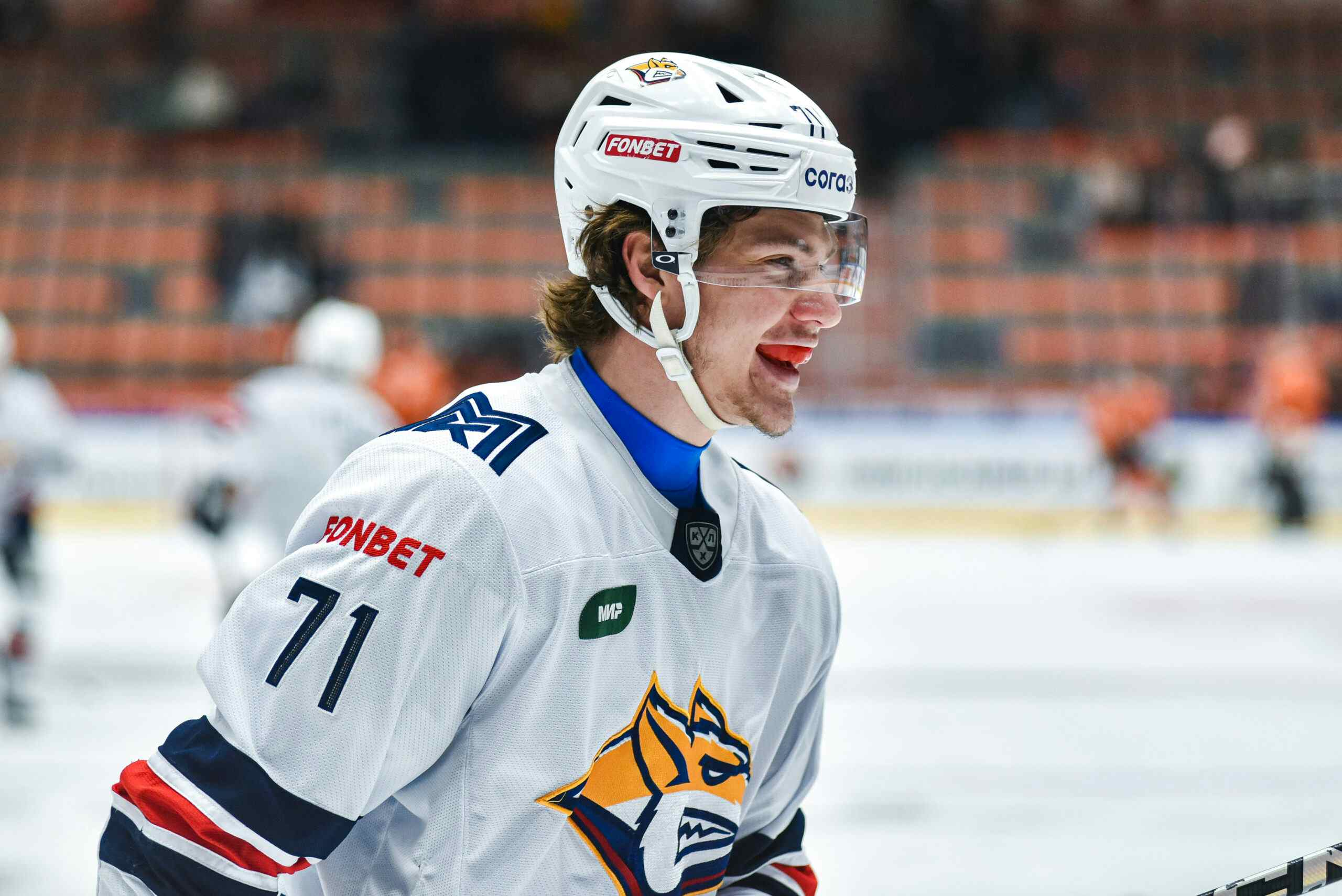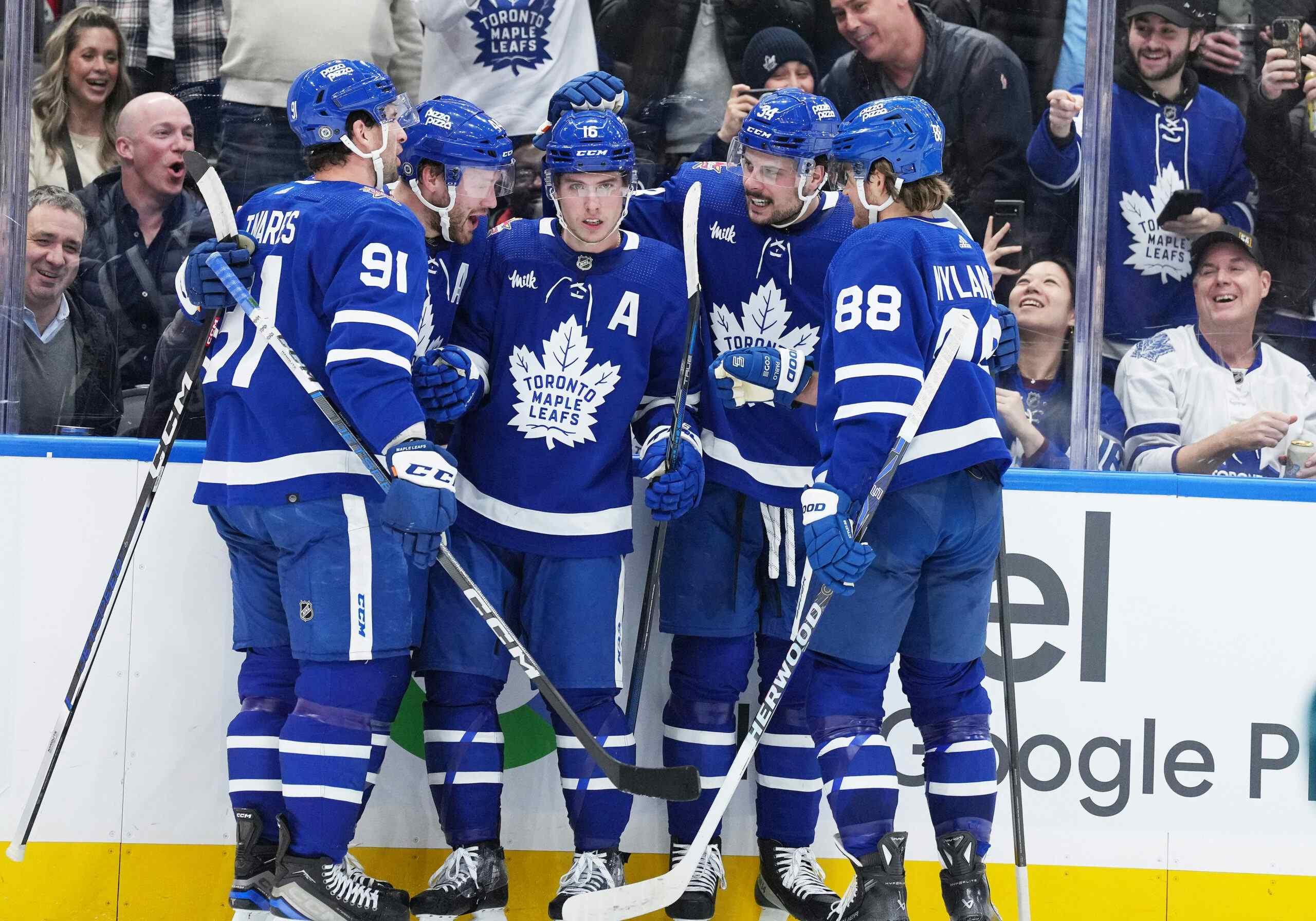The IceCaps are finally the rival the Marlies were promised, and possibly their kryptonite

Photo Credit: Christian Bonin / TSGPhoto.com
This story begins on April 29th, 2005. A few weeks after Kyle Wellwood ended the St. John’s Maple Leafs’ regular season with a shootout winner immortalized on potato-era YouTube, the team was eliminated by the Manitoba Moose in the first round of the players. It was a quiet ending; a 4-0 shutout to cap off a 4-1 series, and for most teams, they’d move on with some dejection, start training, and come back in October to give it another go.
The St. John’s Maple Leafs never came back.
A few years prior, a group of investors committed to creating a pro hockey tier under the Maple Leafs in Toronto. They convinced the City of Toronto to help them turn Ricoh Coliseum, previously notable as a trade show and competitive livestock venue, into a hockey arena. Despite some MLSE kicking and screaming, this group successfully moved the Bulldogs “out” of Hamilton (a team was moved back in so quickly that it was effectively a paper transaction), and into Toronto. For the first time ever, AHL hockey had arrived in Toronto proper.
The biggest issue? Not even a full lockout season and a newly renovated rink could convince Leafs fans to cheer for the Edmonton Oilers. As such, the team packed their bags.
Leafs ownership, seeing an empty rink with a brand new interior and an opportunity to keep their prospects close to home, did the most logical thing one could do; they signed a 20-year lease to maintain Ricoh Coliseum and brought the distance between their NHL and AHL rinks from 3086 kilometres to 3.5. The Toronto Marlies were born.
Over the years, the Marlies grew from a lapped opportunity for ownership to the most concentrated professional development project in hockey. At the same time, however, Newfoundlanders suffered. From their standpoint, there was no reason to move the “Baby Leafs”; games regularly sold out, merchandise sold well, and all of Atlantic Canada, let alone the city of St. John’s, had their backs. Yet for years, they sat there, without a team to fill the void.
But much like a failed project ripped away their team, another one was about to give one back to them. The NHL begrudgingly accepted that the Atlanta Thrashers were unlikely to ever profit despite playing in a major market, and in 2011, True North Sports and Entertainment (bless those SE ownership groups) moved the Thrashers to Winnipeg to give rebirth to the Jets. This left their AHL franchise, the Manitoba Moose, in an awkward position, so they partnered with former Newfoundland Premier Danny Williams to move that team to St. John’s to restore AHL balance to a place craving it.
It was a great story, no doubt. Since the IceCaps have come into the league, they’ve sold out every game they’ve played, and gone on some dramatic runs of hockey on both ends of the spectrum, finishing in the AHL’s basement and also winning the Eastern Conference. But like any sports team, they needed rivals.
The Marlies seemed like a great fit in theory, given the organization’s past ties to St. John’s and the contingent of Leafs fans still in the province. Besides, MLSE was one of the few groups that could afford to eat the travel costs of flying to Newfoundland, considering a good experience for their players rather than a detriment in the balance book.
It was settled. The two teams would start playing a lot of games against each other from nearly the second the IceCaps were formed. There was just one problem; the rivalry made no sense.
The AHL’s schedule is weird, in the sense that many teams never face each other. When the Marlies took on the Norfolk Admirals in the 2012 Calder Cup Final, it was the first the two teams had ever been paired off. So to see an out-of-conference team four-to-eight times a season didn’t make much sense. The other issue was that, much like watching Oilers prospects made no sense for Leafs fans when the Roadrunners experiment happened, there was no reason to for the fans or even the players to get riled up about taking on the future Winnipeg Jets. Winnipeg wasn’t in Toronto’s division, and within a year, had ditched the NHL’s Eastern Conference entirely. It’s hard to get mad about guys who won’t effect your standings, or your future.
But the tides changed again this year. True North decided they wanted to follow the Marlies model and moved the IceCaps back into Winnipeg to give birth to the Moose, and the Bulldogs, once the team quickly saved in this story, left Hamilton for good to become the new IceCaps.
It was the best case scenario. Anybody who’s watched a Marlies and Bulldogs game in the past knows that those were always recipes for entertaining disaster. Part of it was due to the teams being so close together and facing each other so often, but a lot of the rivalry came via affiliation. It was a place where the Leafs and Habs rivalry could be instilled in young talent, creating a bond of hatred before the proper jerseys were ever worn.
Carrying this over to the IceCaps finally created the rivalry that the AHL wanted. Not only do you have the relocation connections, but you have this unique, long distance hatred. The league realigned the divisions this year and but both teams in the North, adding standings implications to every game. From an entertainment perspective, the game’s went from “Why do they have to face each other?” to “Why can’t they have a 76 game series?” overnight.
The Marlies could probably do without the results they’ve had against them so far, though. Toronto has lost just six of their first 21 games, but half of those defeats come at the mercy of the IceCaps. It’s hard to say why. Maybe they have Antoine Bibeau’s number; he’s let in 18 goals on 92 St. John’s shots this year. Maybe it’s coincidental distribution; even the best teams lose sometimes, and they face this team a lot.
Most likely, though, it’s the element of distraction. Yesterday’s game, a 5-1 defeat, was a good example of that. St. John’s’ vets, who have tons of expertise with being irksome to everybody but especially those from Toronto, drew an incredible ten powerplay opportunities out of the Marlies, including a five-minute man advantage after Rich Clune was enticed to drop the gloves with pest Gabriel Dumont, who left his gloves on. Three of the IceCaps’ goals came from similar opportunities, and despite Toronto going on a 31-18 shot run in the second and third periods, they were never able to get a firm grip on this game, much like they haven’t in any of the four matchups (save for the third period of the 17-goal extravaganza).
That’s okay, though. For these young players, vitriol-fuelled games like this are part of the learning process. They’re reminders that development league games are more than just free-skate tryouts, and though losses like the pair this weekend are reminders that not even the best teams can coast through the season. Besides, the two teams still have eight more cracks at each other before the season ends, so there’s lots of time to reverse the tables on this season series.
At the end of the day, it’s nice to see a manufactured rivalry develop into a real one. It took a lot of bureaucracy and relocation to make it happen, but right now, it appears to be worth it.
Recent articles from Jeff Veillette





